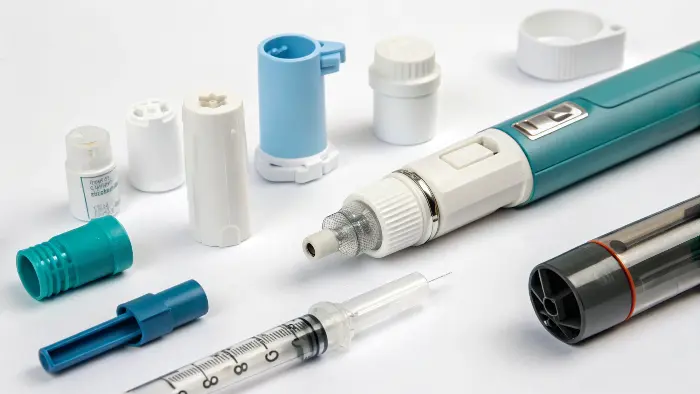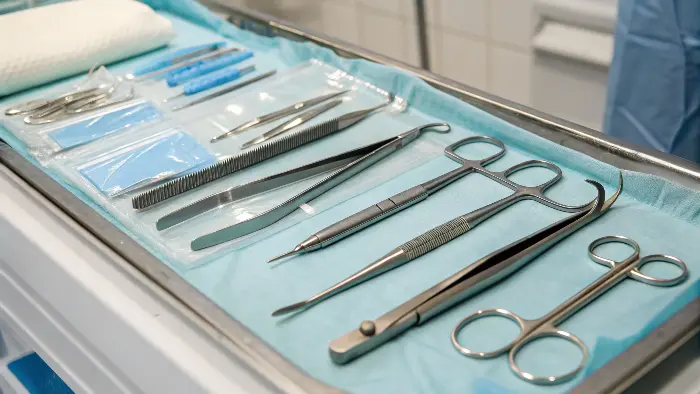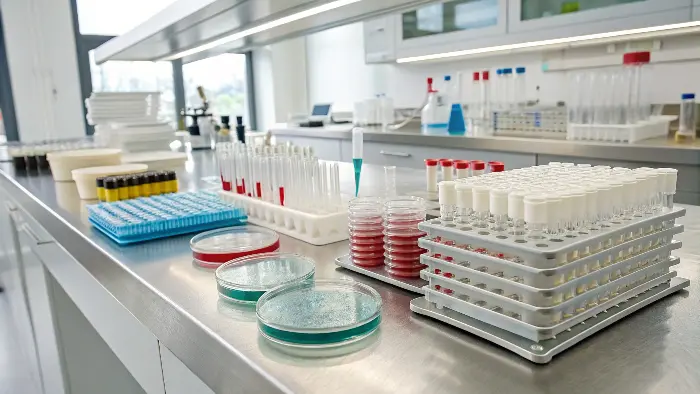Struggling with unreliable or costly medical components? The demand for precision and sterility in healthcare is intense. This tech is seriously a game-changer.
Injection molding creates vital medical parts like diagnostic cassettes, drug delivery devices, surgical instruments, and labware with extreme precision, biocompatibility, and sterility. It’s truly transforming patient care and medical innovation, you know?
You know, Alex, when we first started CavityMold back in 2009, I was always fascinated by the sheer range of what injection molding could do. But honestly, it’s the medical applications that really make you pause and think about the impact we can have. We’re not just making plastic parts; we’re contributing to tools that can save lives or make someone’s treatment journey a bit easier. It’s a hefty responsibility, but also incredibly rewarding. I want to dive into some of these amazing applications, because it’s not just about consumer gadgets – this technology is a silent hero in hospitals and labs worldwide.
How Are We Getting Quicker, More Accurate Diagnoses Thanks to Molded Plastics?
Delayed or inaccurate diagnoses can be devastating, right? The race for faster, more reliable diagnostic tools means every component has to be perfect. So, precision in manufacturing these devices isn’t just ideal; it’s absolutely critical.
Injection molding produces highly precise components for diagnostic devices like test cartridges, microfluidic chips, and cuvettes, ensuring test accuracy and rapid results. This tech is essential for modern point-of-care testing and lab automation – pretty cool stuff!
I remember a project we worked on a few years ago – it was for a company developing a new rapid diagnostic test for an infectious disease. The core of their test was a tiny microfluidic chip, with channels barely visible to the naked eye. The tolerances were insane! We had to push our machines and our expertise to the absolute limit. But seeing that first batch of perfect chips come off the line, knowing they’d help doctors get answers faster… that’s a feeling that sticks with you. It’s not just a piece of plastic; it’s a piece of a puzzle that helps people.
Tiny Channels, Big Impact: Microfluidics
Microfluidics is a real game-changer in diagnostics, and injection molding is key to making it happen affordably. These devices use tiny channels – sometimes thinner than a human hair – to manipulate small amounts of fluids for tests. Think "lab-on-a-chip" technology. We can mold these intricate channel networks with incredible precision using materials like COC (Cyclic Olefin Copolymer) or PMMA (Polymethyl Methacrylate). This means faster tests, using smaller samples, often right at the patient’s side. It’s amazing how something so small can deliver such powerful results.
Consistency is King: Cassettes and Cartridges
Then you have the single-use cassettes and cartridges for various diagnostic machines – blood glucose monitors, PCR tests, immunoassay analyzers. Millions of these are used every day. Each one has to be identical to the last to ensure the machine gives accurate readings. Injection molding excels at this kind of high-volume, high-consistency production. We often use materials like ABS, polystyrene, or polypropylene, depending on the specific chemical compatibility and optical clarity needed for the test. It’s all about reliability, test after test.
Optical Precision: Cuvettes and Sample Wells
Many diagnostic tests rely on optical measurements – like how much light passes through a sample. For these, components like cuvettes or the wells in microtiter plates need to be optically clear and have perfectly consistent wall thicknesses. Any tiny flaw could throw off the reading. So, we use specialized clear plastics like polystyrene or acrylic and pay super close attention to the mold polishing and processing parameters. It’s a detail, but in diagnostics, details are everything.
Can Tiny Molded Parts Really Make Drug Delivery Safer and More Precise?
Getting the right dose of medication is critical, and inconsistent delivery can have serious consequences, can’t it? Patients rely on devices to be accurate and easy to use, every single time. So, making these devices needs an almost obsessive attention to detail.
Absolutely! Injection molding creates precise components for drug delivery systems like inhalers, auto-injectors, and insulin pens, ensuring accurate dosing and patient safety. It’s all about making treatment more effective and user-friendly.

It’s one thing to mold a simple part, but when you’re talking about components for something like an insulin pen or an asthma inhaler, the stakes are just so high. A tiny variation in a molded gear or plunger could mean someone gets too much or too little medication. We had a client developing a new auto-injector, and the internal mechanism was incredibly complex – a series of tiny, interlocking parts. The material selection, the mold design, the process control… everything had to be spot on. It’s a good reminder that even the smallest parts we make can have a massive impact on someone’s health and well-being.
Breathing Easy: Components for Inhalers
Think about asthma inhalers or dry powder inhalers. They have all these intricate internal parts – dose counters, actuators, aerosolizing chambers – that need to work perfectly together to deliver a precise metered dose. Injection molding allows for the creation of these complex geometries with tight tolerances, often using materials like acetal (POM) for its strength and lubricity, or ABS for the housings. It’s pretty amazing how much engineering goes into something that fits in your pocket.
Painless Precision: Auto-Injectors and Pen Systems
Auto-injectors, for things like epinephrine or biologic drugs, and pen systems for insulin, are designed for patients to self-administer. This means they need to be incredibly reliable and easy to use. The internal mechanisms often involve tiny gears, springs, and plungers, all working in perfect sequence. We mold these from engineering plastics that offer dimensional stability and consistent performance. The goal is to make the injection process as smooth and error-free as possible.
Beyond the Device: Vials, Syringes, and Stoppers
And it’s not just the complex devices themselves. Think about pre-filled syringes, or the plastic vials and specialized stoppers and seals used for medications. These also require precision molding to ensure they are sterile, don’t interact with the drug, and provide a secure closure. Materials like medical-grade polypropylene (PP) or COC are often used for their clarity, barrier properties, and ability to be sterilized. Even the humble syringe barrel needs to be perfectly cylindrical and smooth for accurate dosing.
Are Plastic Surgical Tools Really Good Enough for the Operating Room?
The idea of plastic in surgery can make some folks nervous, wondering if it’s truly up to the task. When a surgeon needs a tool, it has to be reliable, strong, and perfectly sterile. So, can plastics truly meet these incredibly high demands?
Yes, surprisingly! Injection molding produces many high-precision, single-use surgical instruments like scalpel handles, forceps, clamps, and retractors. Materials are chosen for strength, biocompatibility, and the ability to withstand sterilization, making surgery safer and more efficient. This is a big shift!

This is an area where I’ve seen some really impressive innovation, Alex. Initially, I think there was skepticism about using plastics for anything beyond very simple surgical disposables. But the advancements in polymer science and molding technology have been incredible. We’ve worked on projects involving highly engineered plastics for surgical tool components that need to be incredibly strong, yet lightweight. The user insight about strength, biocompatibility, and sterilizability is spot on – those are the holy trinity for these applications.
The Rise of Single-Use Surgical Instruments
One of the biggest drivers here is the push to reduce hospital-acquired infections. Reusable metal instruments require rigorous, time-consuming, and costly sterilization processes. Single-use, sterile-packaged plastic instruments eliminate the risk of cross-contamination. We’re talking about things like forceps, clamps, retractors, and even some types of trocars for minimally invasive surgery. They arrive sterile and are disposed of after one use. This is a huge benefit for patient safety.
Material Matters: Strength, Sterility, and Biocompatibility
The materials used for these tools are not your everyday plastics. They are often high-performance engineering polymers like PEEK, PEI (Ultem), or medical-grade polycarbonate and ABS, sometimes reinforced with glass fibers for extra strength and rigidity. As you pointed out, Alex, these materials must be biocompatible, meaning they won’t cause adverse reactions in the body. And critically, they need to withstand sterilization methods like gamma irradiation, EtO (ethylene oxide), or even steam autoclaving in some cases, without degrading or losing their mechanical properties. We had to do a lot of R&D for a client who needed a specific tool to withstand repeated autoclaving – it was a real materials science puzzle!
Precision for the Surgeon’s Hand
Even though they might be "disposable," these instruments need to perform flawlessly. Surgeons demand tactile feedback and precision. So, the molding process has to deliver parts with sharp edges where needed (like for some types of dissectors or blade holders), good grip surfaces, and reliable locking mechanisms for clamps or forceps. The design freedom of injection molding allows for ergonomic shapes that might be difficult or expensive to achieve with metal. It’s about giving surgeons the best possible tools, even if they are made of plastic.
How Does Molding Keep Labs Running Smoothly and Safely?
Lab work demands accuracy and contamination control, right? Any tiny error or impurity can ruin an experiment or a diagnostic test. So, the disposables and equipment used have to be absolutely top-notch, consistent, and free from leachables or contaminants.
Injection molding is essential for producing a vast array of labware like pipette tips, petri dishes, test tubes, and microplates with high precision and purity. These sterile, often disposable, items are critical for accurate research and diagnostics, preventing cross-contamination.

Ah, the humble pipette tip! It’s funny, you see them everywhere in a lab, and you probably don’t give them a second thought. But I can tell you, making a good pipette tip mold is an art form! We had a customer who needed tips with incredibly fine points and absolutely no flash (those little wisps of extra plastic) because it would affect their liquid handling accuracy. We spent weeks optimizing the mold design and the injection parameters. It’s these everyday items, produced by the millions, that form the backbone of so much scientific research and clinical testing. And they all start with a good mold.
The Unsung Heroes: Pipette Tips and Tubes
Pipette tips, centrifuge tubes, sample vials, petri dishes – these are the workhorses of any laboratory. They need to be manufactured to incredibly tight tolerances to ensure accurate measurements and to fit automated lab equipment perfectly. Materials like medical-grade polypropylene (PP) are commonly used because PP is chemically resistant, can be autoclaved (for reusable items, though most are single-use), and is low-binding, meaning precious samples don’t stick to the walls as much. The molds for these often have many cavities to produce parts in high volumes efficiently.
Multi-Well Plates for High-Throughput Screening
In drug discovery and diagnostics, scientists often use multi-well plates (like 96-well or 384-well plates) to run many experiments simultaneously. Each well has to be identical in volume and shape. Injection molding is perfect for this, allowing for the production of these complex plates with flat, clear bottoms for optical reading if needed. Polystyrene is a common choice for its optical clarity and suitability for cell culture applications, if treated.
Ensuring Purity: No Contaminants Allowed!
A huge concern in labware is the potential for leachables and extractables – tiny amounts of chemicals that can leach out of the plastic and interfere with sensitive assays or contaminate cell cultures. This is where material selection and clean manufacturing processes are vital. We often use specific medical-grade or even "virgin" resins that are certified to be free from certain additives. And for some applications, the molding might happen in a cleanroom environment to prevent any particulate contamination. It’s all about ensuring the plastic doesn’t mess with the science!
